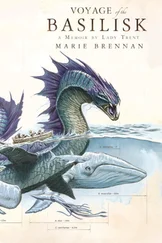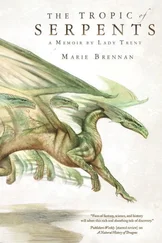This is named for its associated peak, the lesser companion to the towering Gyaptse. It descends off Cheja in a long, curving arc that wraps around the southeastern side of its base like a tongue. Until I took that holiday in southern Bulskevo, my image of a glacier was of a towering block of ice, intensely blue in its center, bordering a frozen northern sea. But glaciers, of course, can form on inland mountains provided they are high enough, and they are far from the uniform mass I imagined. Glacier ice flows: more slowly than water, to be sure, but it moves all the same. Where it moves quickly enough, it forms an icefall—the solid-state equivalent of a waterfall. Such areas are shattered with crevasses (into which one may fall) and seracs (tall pillars of ice that may collapse without warning on the unwary traveller). Even a short traverse of a glacier is exhausting at best, injurious or fatal at worst.
Upon reaching its edge, we sent one porter back with the ponies, those being our parting gift to the people of Hlamtse Rong. It meant we would have to move our supplies in stages, but that was unavoidable: no pony, however surefooted, could hope to manage what lay ahead.
Crossing that glacier was not a very technical challenge, compared with some of what we did in the following days. For the most part it involved exceedingly careful walking, with Thu or Chendley in the lead testing the ground with their alpenstocks, those iron-tipped, pick-headed staves which have proven so useful to the serious mountaineer. Where a crevasse divided the ground we sometimes crossed via a snow bridge, if our leaders judged it stable enough, but more often went around—assuming we saw the crevasse at all, as many of them are covered with a layer of snow thick enough to conceal, but not to support human weight.
We did not see the one into which I fell.
I do not blame Chendley for missing it. I was the careless one; rather than following strictly in his foosteps as I should have, I strayed leftward in my course. I had just enough time to think that the snow beneath my foot had settled rather more than usual before it gave way entirely, plunging me into the hidden blue abyss.
My shriek echoed off the walls around me, then cut short as the rope tied about my waist did its job and stopped my fall. My alpenstock slipped from my hand and scouted the depths for me. I did not hear it strike bottom, though I must admit I was not exactly listening.
When I could draw breath, I caught the rope with one flailing hand, steadied myself, and looked upward. To my horror, I saw Chendley’s legs dangling over the edge of the crevasse. The collapse of the hidden snow bridge had taken him completely by surprise, and my fall yanked him straight off his feet. He had attempted to arrest his slide as a mountaineer should, by digging his alpenstock into the snow, but this only found purchase when he was almost in the crevasse with me.
What saved us was the gift I mentioned before, from the mountaineers who had trained Tom, Suhail, and myself. Before we left Scirland, the inestimable Mrs. Winstow had given us a brilliant innovation of her own devising, which has since become so vital to those who climb on ice: a framework one straps to one’s boot, whose downward-pointing teeth provide far superior purchase compared to hobnails, without transmitting as much chill to the foot. This is called a crampon, and the sets Mrs. Winstow had gifted to us were made of synthetic dragonbone.
Suhail was behind me on the rope. When I fell and Chendley made as if to follow me into the abyss, my husband would also have been pulled down were it not for his crampons. They gave him sufficient traction that he was able to keep his feet and slam the point of his alpenstock into the snow, further stabilizing him. Had Chendley gone over the edge, committing his weight to the rope along with my own, this might not have been enough; but Chendley caught himself at the last instant, and Suhail held.
I did not know any of this until after I was safely on the surface once more, of course. At the time I could only dangle, for no part of the crevasse wall was quite within my reach, and I dared not swing for the nearest. Soon Chendley was up, though, and Tom joined Suhail; he belayed Thu as our Yelangese companion approached the edge and lowered the ropes he and the porters then used to raise me up.
When I reached the top, I could not immediately speak. Suhail enveloped me in a fierce embrace. I returned this as best as I could, notwithstanding the painful bruising I had received about the middle. (I recall thinking, rather inanely, that I had come a long way since my first experiment with abseiling in Vystrana, but that I did not recall my ribs hurting quite so badly back then. At the time I chalked this up to the difference in my age, but later I realized I had likely cracked one of the aforementioned ribs. Which I ought to have mentioned to those around me… but it seems I have never quite outgrown my youthful stupidity.)
Suhail might not have released me had Chendley not called out, reminding us that he stood on the opposite side of the crevasse. I tugged my clothing straight, managed a smile for the others, and said, “While I was down there, I looked about for any other frozen dragon specimens. Alas, I did not see any.”
Thu stared at me, clearly wondering if he had suffered a failure of translation. Tom swore, laughing as he did so. Chendley, shouting across the crevasse, demanded to know what we were going to do next.
Roped as we were, we could not conveniently go around the gap; and after that scare, none of us were quite willing to unrope. But fortunately the crevasse had a nearby bit where the walls sloped more agreeably inward, and we were able to improvise a crossing. Our supplies we later brought by a much safer route, around the end of the chasm.
Such were the incidents that delayed us. I will not recount them all; our report on the journey was published years ago in the circular of the Peak Club. Any mountaineering enthusiast interested in the details may look up that account and marvel at the primitive state of the sport in those days, and our sheer dumb luck in not getting ourselves killed. For me, the next point of relevance comes after we reached the far side of the glacier, dismissed our remaining porters, and entered the little valley where Thu had found his specimen.
* * *
I must take a moment to lay the scene, for not all of my readers are familiar with the topography of mountains in general (much less that particular location), and the specifics are vitally important to the progress of this tale.
Gyaptse is the highest peak in the wall that marks the western boundary of inhabited Tser-nga, and a more forbidding mountain one would be hard-pressed to find. There are taller—it does not even come close to claiming the title in that regard—but few with so unfriendly an aspect. Its southern facet, the one visible from our approach, falls in an array of nearly sheer faces, of so dark a stone as to appear almost black in anything other than direct sunlight. Snow and ice can only cling to scattered footholds, and I could not help but mentally arrange their harsh, slanting lines into a face, as if the mountain were frowning at me. The peak itself is peculiar in shape, almost like a tower; and a more unassailable tower I have never seen. In recent years three expeditions have tried to assail it: none have succeeded, and one perished almost to the last man.
Fortunately for us, we had no need to climb the peak. Our initial interest lay in a valley below, the cirque between two aretes or ridges descending off Cheja and Gyaptse. The latter, which is the route by which those later mountaineers have attempted the peak, has come to be known as the Dumond Ridge, after the leader of the first of those expeditions. The other I attempted to name Thu Ridge, in honour of our companion (without whom none of us would have been there); and it is called so in Yelangese. But in my homeland this attempt resoundingly failed, and mountaineers there speak of it as the Trent Ridge instead.
Читать дальше












